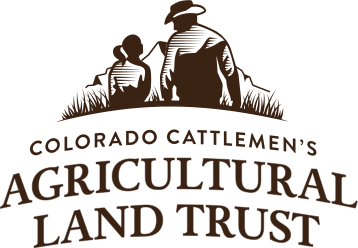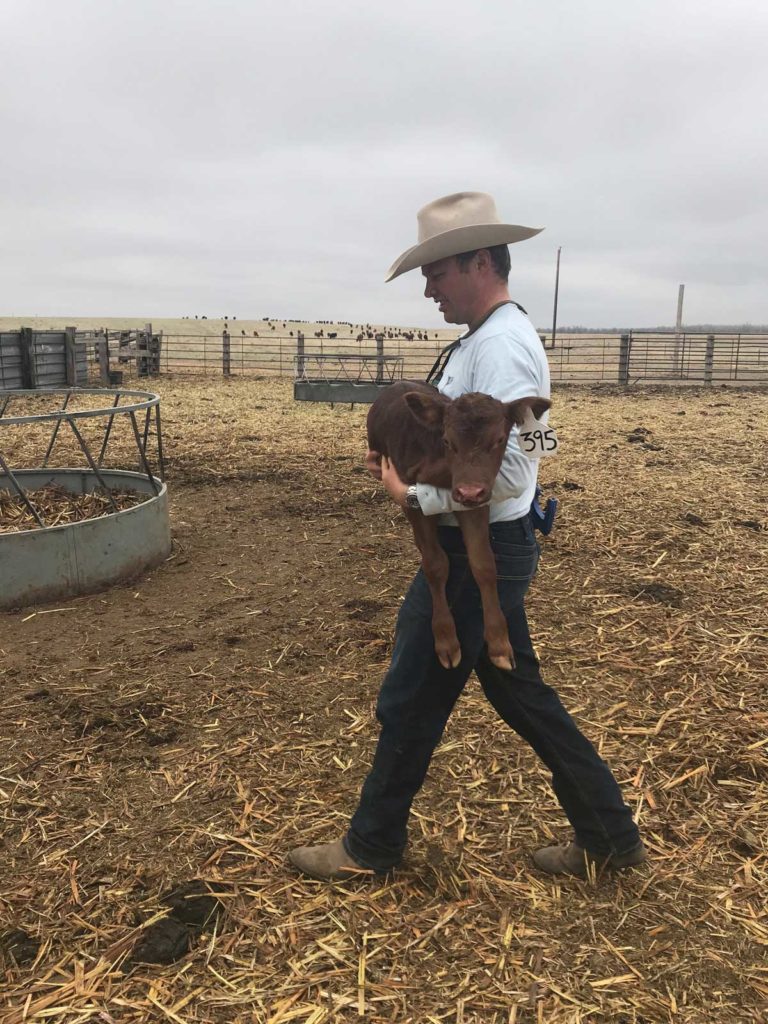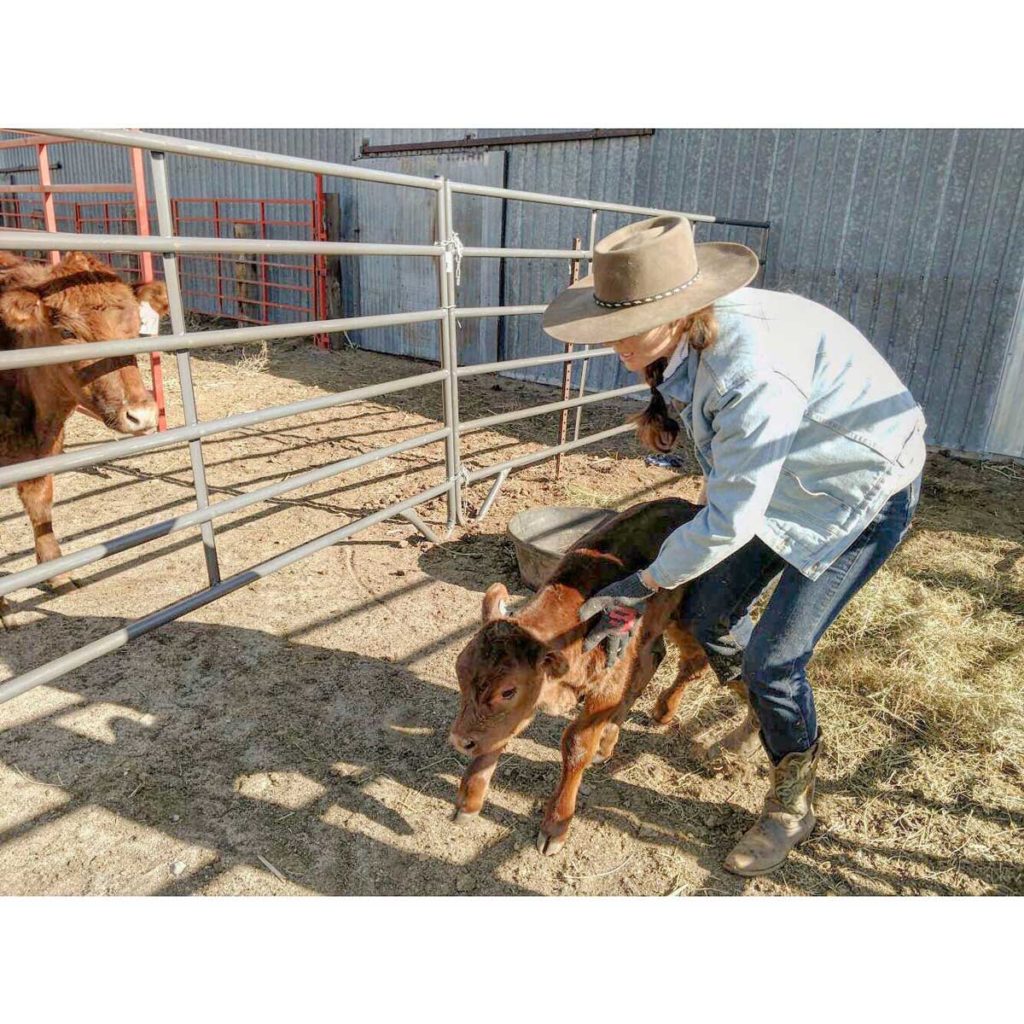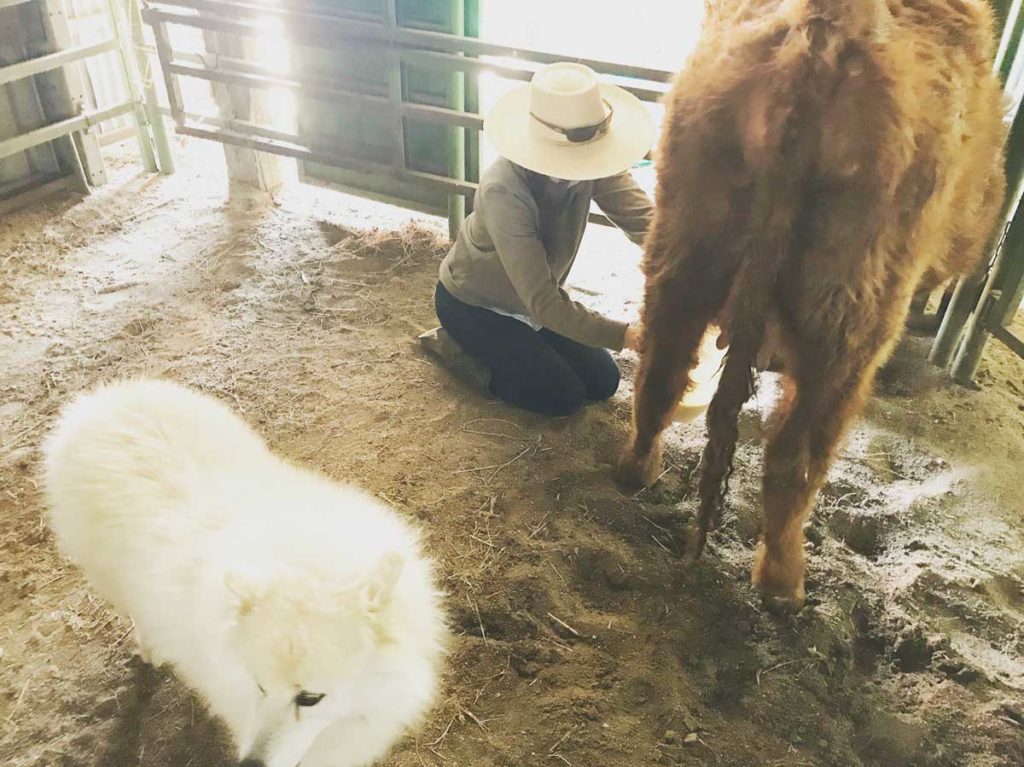Calving On The Flying Diamond – Written By Lauren Johnson
Ah, calving season. It might be the best (and most stressful/sleepless) time of year on a cattle ranch. It’s the time of year ranchers work 24/7 to ensure the health of calving heifers (first-time moms) and cows (2nd, 3rd and so on moms) and their babies. Cattle ranchers are called upon to be around the clock midwives, nurses and mothers (in case of an orphaned calf) on top of everything else that comes with running a cattle operation – fixing fence, feeding, herd monitoring, checking water, managing the grassland resource and the books! It’s a big job, but we wouldn’t have it any other way. As our calving season comes to a close on the Flying Diamond Ranch, we thought we’d share with you a few highlights from this year’s season.
First, we’ll give you a little background into our calving philosophy. We calve in May along with the deer and pronghorn and when the grasses start to green. If nature does it this way, we figure there’s a good reason why! Calving in May ensures that our nursing cows get all of the nutrition they need from our native grasses without supplementation. Also, due to warmer weather, we eliminate the risk of losing calves due to cold temperatures. This allows us to take a more hands-off approach when it comes to monitoring calving heifers and cows and it also reduces the risk of coyote attacks on calves as there are plenty of other food sources available. We tend to find our “work with nature” philosophy benefits our land and cattle as much as it benefits us economically.
Alright, enough talk, let’s get down to those highlights and photos of baby calves!
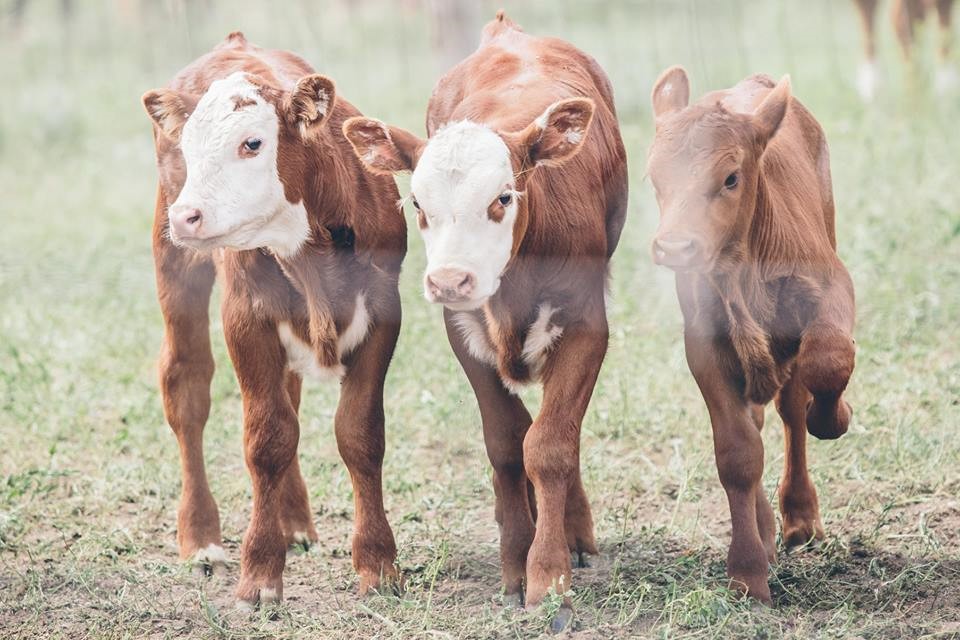
Baby calves. I mean come on. Those big eyes, long eyelashes and wobbly walk will just melt your heart.
Everyday the heifers (first-time moms) go out to pasture at 10 am and will graze until 4 pm. Some will have their calves out in the pasture without any problems. It’s definitely the ideal situation for both the pair (heifer and calf) and the rancher. At 4 pm, we gather the herd horse back and bring them into the corrals where we let them in on feed (hay) for the evening. The philosophy is if they’re eating happily at night, they tend not to calve when it’s most inconvenient for the rancher. Inevitably there will always be calves born at night which is why as ranchers, we check the heifers at various times throughout the night to make sure everything is a-okay. If there is a problem, the herd is close to the barn and we can easily bring the heifer into the calving barn to assist in delivering her calf. Delivering a calf at 2 am isn’t the most convenient, but we do whatever we can to ensure the health of heifer and calf!
Once a heifer has delivered her calf, we keep the pair in the corrals in a pen with food and water to be monitored to make sure they have bonded and are both healthy. Since we can have multiple pairs in the corrals at any given moment, it becomes a game of musical chairs moving pairs around until they are let out into the pair pasture 24 hours after delivery.
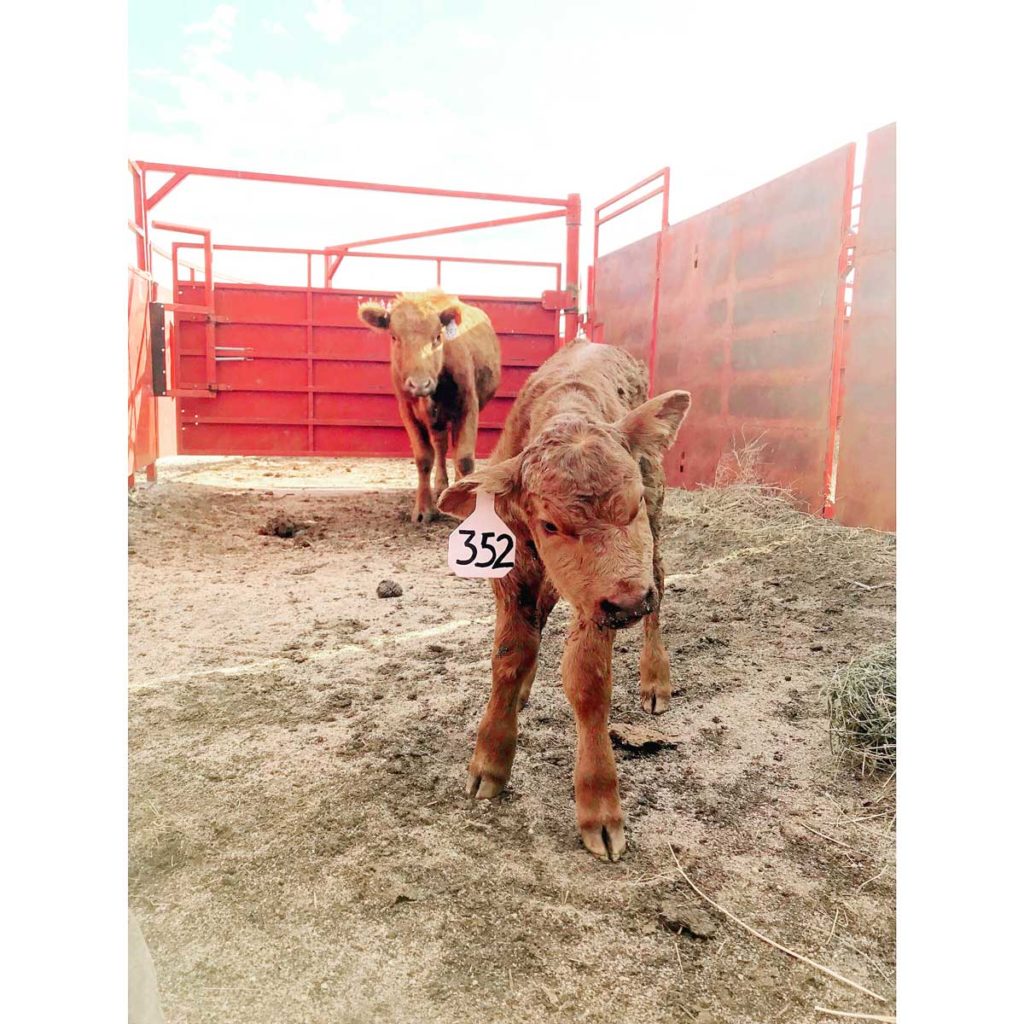
Heifer and calf in their pen for their 24 hour monitoring period before heading out to pasture. 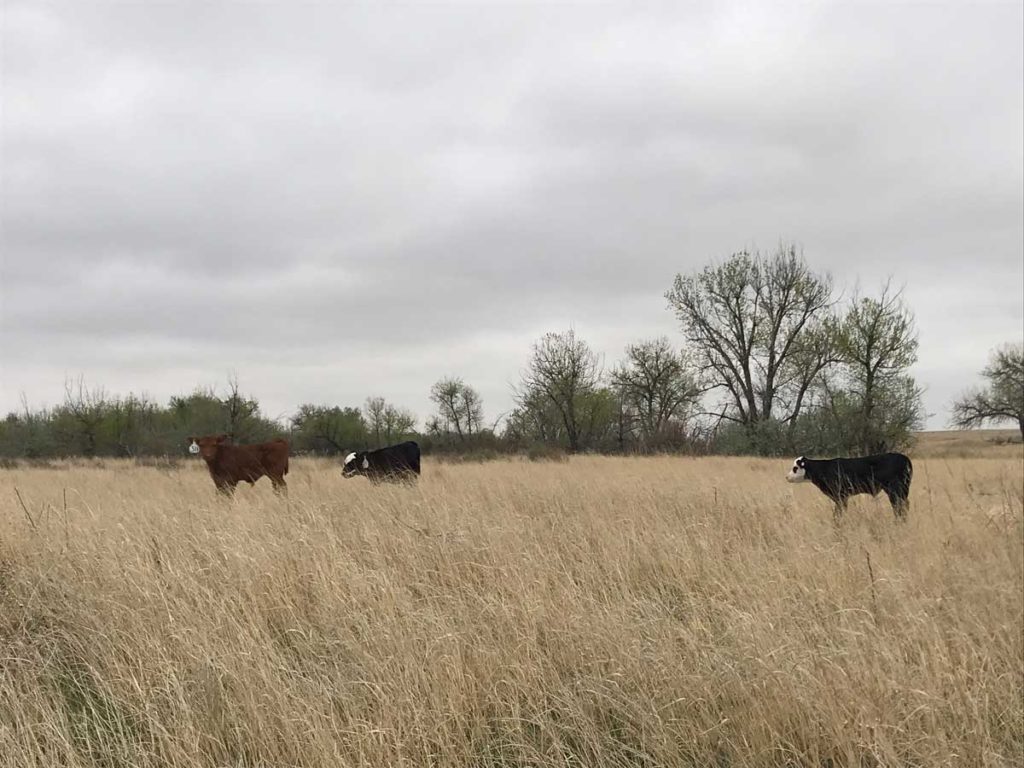
The pairs pasture.
In the event a heifer needs help, we bring her into the barn and head catch her so we can assist in delivering her calf. Sometimes, we try to get them to lie down on their sides as that is how they would deliver naturally, but that doesn’t always happen, so we can assist when they’re standing up as seen below. Also, you can see our calf tracking system in the background. We have tags for each calf to keep track of them and write notes about their mom and overall health. This system helps us keep tabs on our herd health!
If the heifer had a difficult delivery or is not bonding with the calf, we’ll milk out the mother into a bottle to bottle feed the calf. Those first sips of milk are super important because they are what provide the calf colostrum, which contains antibodies to protect the newborn calf against disease within the first 24 hours of life. Also, that fluff ball on the bottom left is our ranch dog, Squishy. He doesn’t look like a ranch dog, but he sure thinks he is!
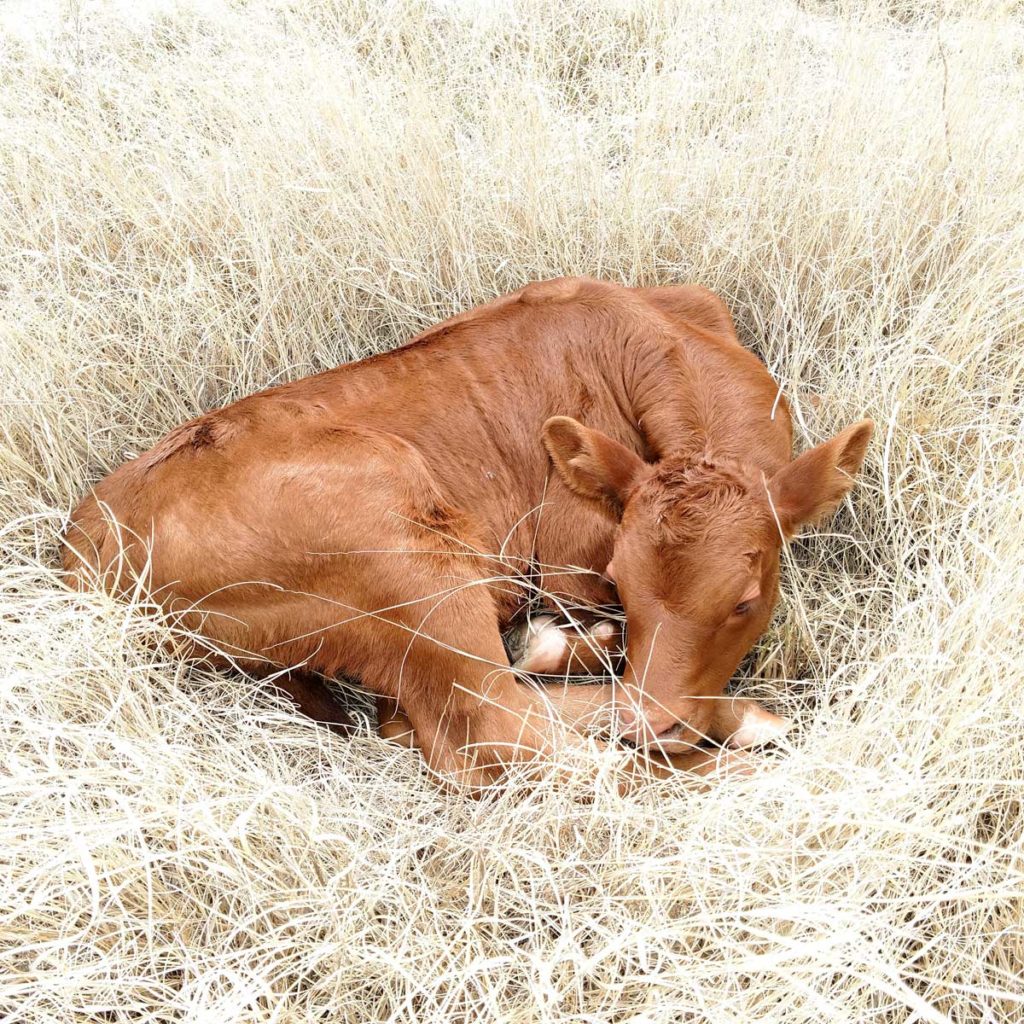
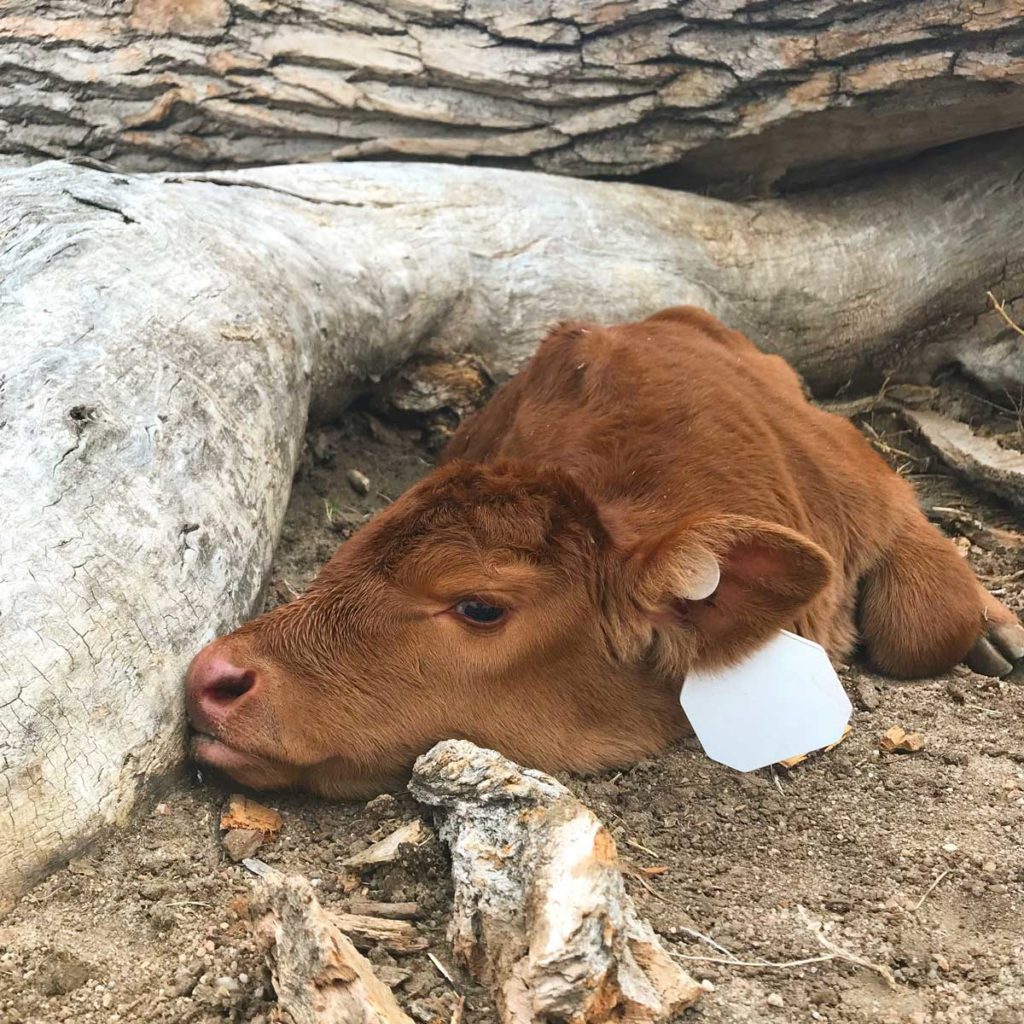
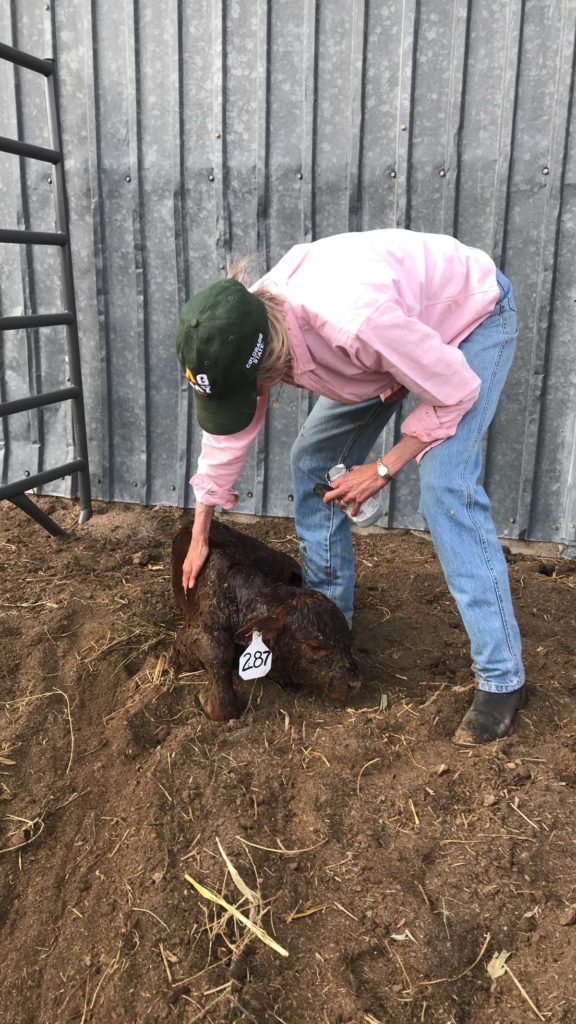
We helped deliver this calf and then moved it into a pen with his mother for the 24 hour monitoring period. Everything went smoothly and they moved out to pasture 24 hours later!
One of the best parts of calving season is riding through the pair pasture to check on calves to make sure everyone is healthy. It’s kind of like an easter egg hunt with calves. They really do a great job hiding!
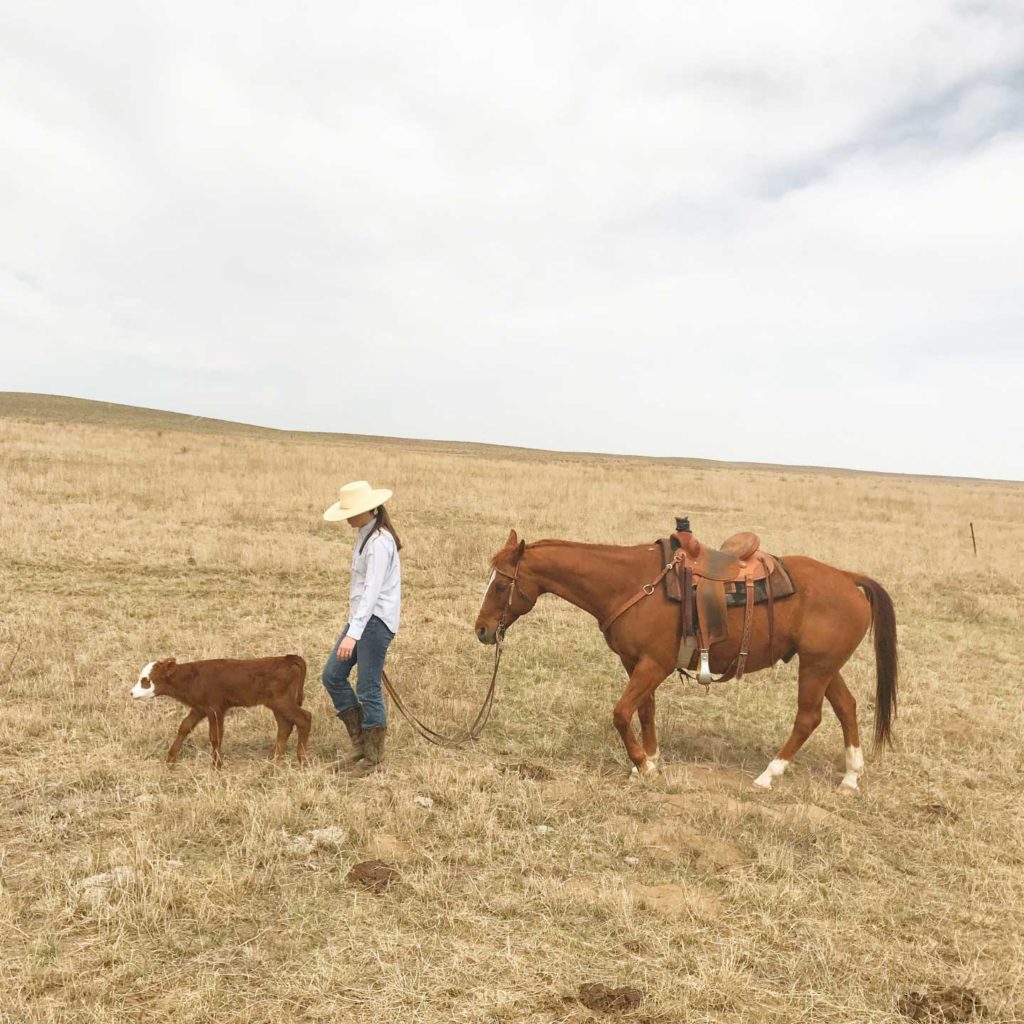
Even though it’s difficult to move our heifers and calves through pastures, it’s important for our grassland health, so we make an effort to move the herd during calving season to prevent overgrazing. It often takes us several days to get the herd moved early on as calves aren’t too keen on moving. The key is to make sure calves don’t get lost from their moms, so we really take our time in moving pastures.

All in all, it has been a great calving season for us here on the Flying Diamond Ranch! We only assisted about 5-8% of heifer births, which meant we caught a little more sleep! Thanks for getting through this post – we hope you enjoyed it! If you have any questions, feel free to reach out to us on facebook @flyingdiamondcattler and instagram @flyingdiamondcattleranch.
